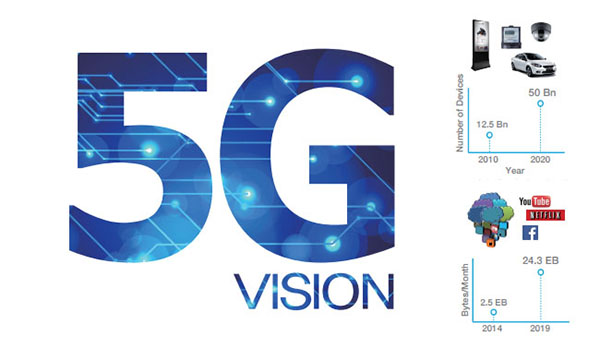
10 Aug 5G Prototypes Showcased by Samsung and Nokia
5G was the hot topic at the National Instruments’ NI Week held in Austin, Texas last week with its main goal being to greatly improve 4G speeds.
The conference themes were the Internet of Things and Big Data and there were several prototypes exploring this. Samsung illustrated technology that uses virtual signal beams to lock into multiple receivers. This means that interference can be reduced without overlapping transmissions and increases the signal to the target.
Nokia had their first public demonstration of their 5G base station (previously shown privately at the Brooklyn 4G Summit last year). Throughput speed of over 10 gigabits per second was achieved with a latency of less than 1 millisecond. Nokia also reported that the technology had been tested outdoors over 200 meters with successful results to fast-moving receivers.
A full video of the demonstration can be found on the National Instruments NI Week video page by selecting videos from “Wednesday” and “Nokia”.
Samsung and Nokia have also released white papers which outline 5G technologies further.
In its white paper Samsung states that the number of connected Internet of Things (IoT) is estimated to reach 50 billion by 2020. They also state that monthly mobile data traffic will increase ten times by 2019.
What this means for the mobile world is:
Everything Connected
The speed of 5G makes the IoT a reality with the 5G system designed to provide connectivity for up to a million simultaneous devices every square kilometre. This enables a variety of services including mobile payments, wireless metering, connected homes, smart transportation and telemedicine.
Everything in the Cloud
Cloud computing allows for storage and processing of files in the cloud. Input and output interfaces on mobile devices will run smoothly with low latency over 5G. This leads to less processing on the device and stronger engagement with other devices.
Everything Immersive
A more immersive experience will be delivered through Virtual Reality, Augmented Reality and Ultra HD video streaming. The high speed and low latency of 5G will allow users to engage more realistically with the world.
Everything Immersive
Remote access to machines and appliances will be better possible thanks to 5G. Everything from controlling your home remotely, driving vehicles in hazardous environments or even exploring hard to reach places will become standard.
Read more from Samsung’s whitepaper: 5G Vision.
Nokia’s whitepaper focuses heavily on how 5G technologies will be delivered, including frequency spectrums:
Much more spectrum will be needed to meet increased traffic demand. To date, spectrum for mobile communications has focused only on frequency ranges below 6 GHz. To meet demand in the 2020-2030 time frame, spectrum above 10 GHz and potentially up to 100 GHz will be needed. Looking Ahead to 5G Whitepaper.
Much more spectrum will be needed to meet increased traffic demand. To date, spectrum for mobile communications has focused only on frequency ranges below 6 GHz. To meet demand in the 2020-2030 time frame, spectrum above 10 GHz and potentially up to 100 GHz will be needed. Looking Ahead to 5G Whitepaper.
Read more from Nokia’s whitepaper: Looking Ahead to 5G.
The immergence of 5G is incredibly exciting and we will continue to follow its advancements. Sign up to our newsletter to keep up to date with mobility news.

